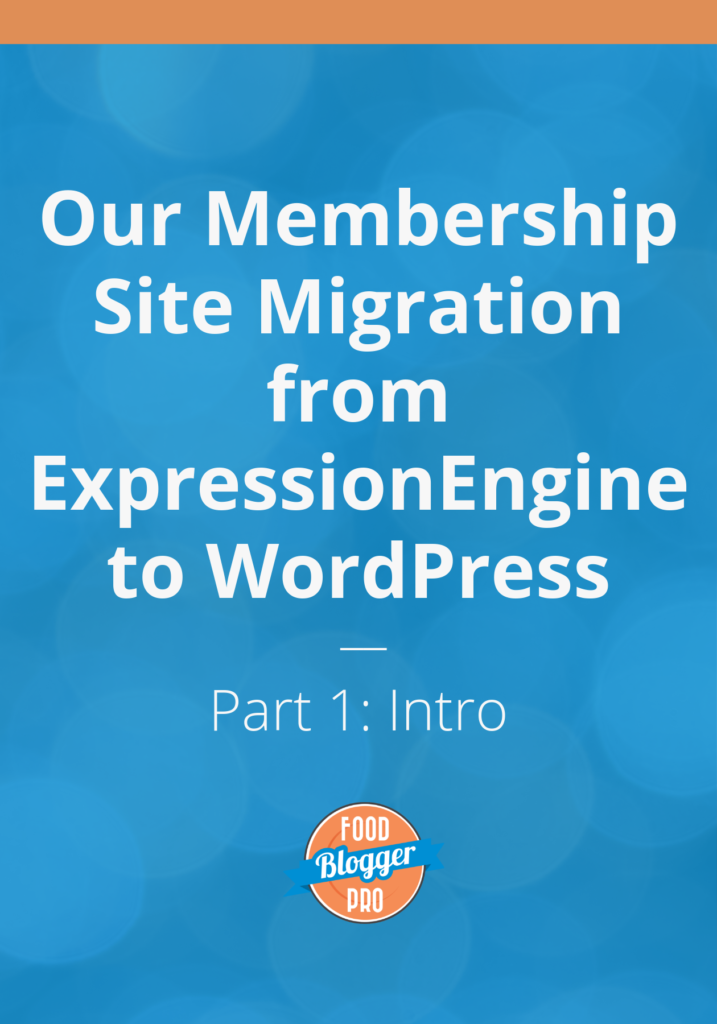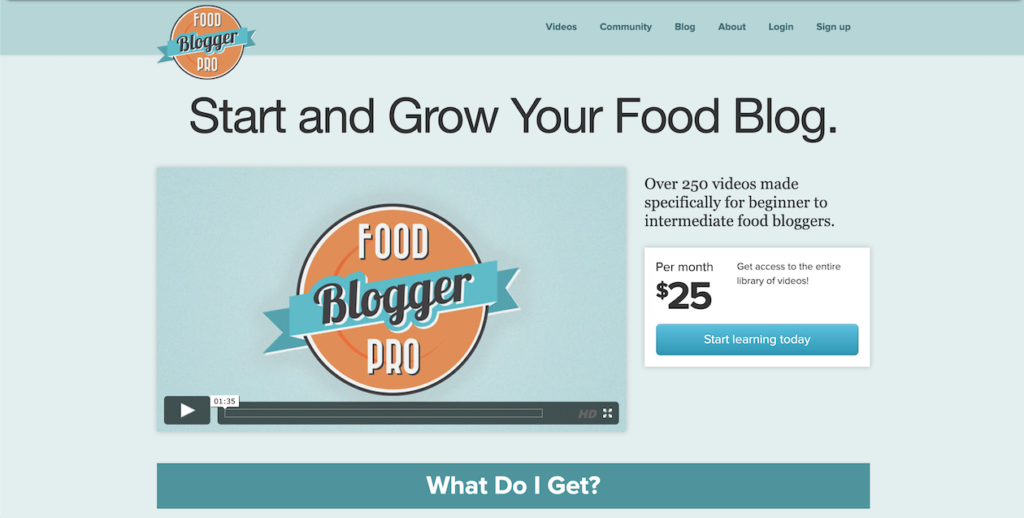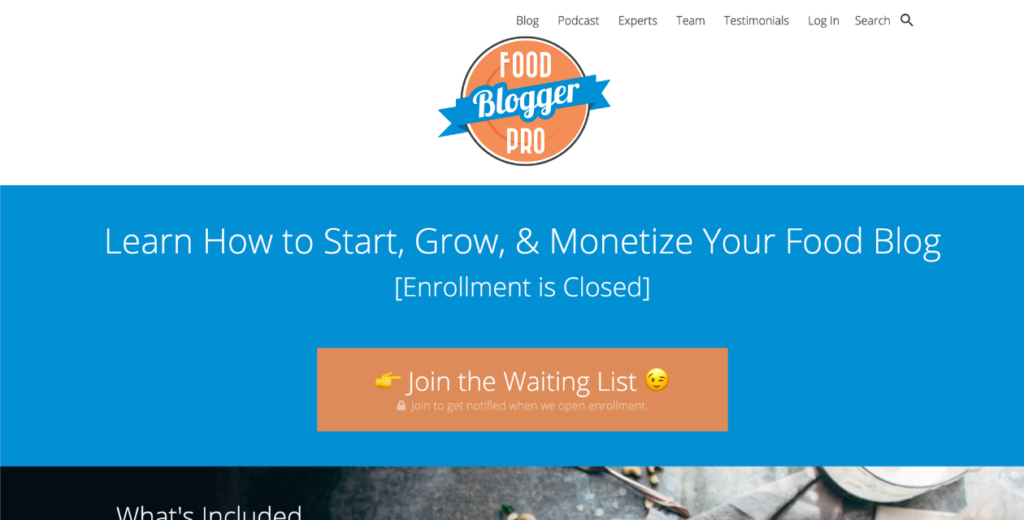
Hello hello hello! And welcome to our Part One of our four-part blog series on Food Blogger Pro’s migration to WordPress!
Well…let’s back up.
If you’ve been around Food Blogger Pro for at least a few months, you’ll know that we recently moved our entire site from a CMS (that’s customer management system) called ExpressionEngine to the CMS we all know and love, WordPress.
This was a huge project that we’ve been chipping away at for years. Since we relaunched Food Blogger Pro on WordPress in April, we’re ready to share our story with you, our lovely readers!
Over the next four blog posts, we’ll publish the story of how we went from saying, “Man, it would be great to run Food Blogger Pro on WordPress one day,” to having a stable, thriving WordPress-based membership site. We’ll focus on the processes and systems that we used to take this project from start to finish (and beyond!).
Who is this blog series for?
Great question. 😊
- Anyone who has a big idea they’d love to tackle with their blog or business, but they don’t know where to start.
- Small teams who want to refine their project development process.
- Individuals who want a system to help them work through big projects.
- Anyone curious about migrating a huge site from one CMS to another.
- Anyone with a membership site on WordPress.
If that sounds like you and if you want to make sure you stay in the loop with this series, be sure to join our mailing list so all of our blog posts are delivered to your inbox when they’re published!
Today’s introductory post will answer a few important questions that will help you understand the stages of a big project, as well as some of the big decisions you might be faced with in a similar situation.
Why is process important with a big project like this?
That’s the million-dollar question! And it’s the reason we’re starting this series.
It’s helpful to have a plan to keep you pointed in the right direction with any big project. Our process looked like this:
- Discovery
- Development
- QA
- Launch
- Post-Launch
We’ll have separate blog posts covering these stages in the next few weeks, but for now, all you need to know is that these five key stages helped drive all of our work, decisions, and deadlines.
Because we really wanted to launch on April 9th, this process helped us avoid nit-picking that would’ve increased the likelihood of missing our launch date. While we knew it was important to have a solid, working site at launch, our process helped us narrow down our “must-haves by launch” and focus on what was the most important first.
Having an established process also helped us prepare and stick to our schedule. We had a rough schedule for each stage, and while some of our stages overlapped with other stages, our schedule kept us on track and ready for what was coming next.
Along those same lines, our documented process helped make sure everyone on our four-person team had the same information, and knew what to expect. Because we all knew where we were in our project process, we knew when decisions had to be made, when we could expect risks, and how our work on the new site would affect the business.
It’s important for you to remember that your project process probably won’t look like ours…and that’s okay.
We’re sharing our process, valuable decisions, and more so that you can get familiar with how we tackled a big ol’ migration project in the hopes of helping you navigate projects you’re tackling with your blog or business.
Why we built Food Blogger Pro on ExpressionEngine
So why build Food Blogger Pro on ExpressionEngine in the first place?
When Bjork and Lindsay had the idea for Food Blogger Pro way back in 2012, Bjork reached out to a few different people about how they started and ran their membership sites.
One of those people was Jon, who was running a membership site called Kicktastic, which was built on ExpressionEngine. Bjork reached out to Jon, asked if they could replicate the functionality Jon had on Kicktastic, and the rest was history.

ExpressionEngine worked for Food Blogger Pro for a really long time. It was an affordable, fast, and relatively simple way to get Food Blogger Pro from the “idea” stage to the live and ready for members stage, and sometimes, that’s what you need.
Because Food Blogger Pro had zero members at the idea stage, it made sense to work with the resources and connections that Bjork and Lindsay had at the time to get a solid site off the ground in just a few months.
Hopefully this serves as a bit of encouragement for you if you’re in a similar situation; you don’t need a giant budget, many months, and a huge team to start something. 😊
Why we decided to migrate Food Blogger Pro to WordPress
So if ExpressionEngine worked when we started Food Blogger Pro, why switch to WordPress?
Both are CMSs, both have easy-to-use backends, and both can help you organize and publish your content, so what makes WordPress better for us now in 2019?
Our version of ExpressionEngine was “Frankensteined” quite a bit – we needed a separate application to handle recurring payments, we pieced together the original functionality from Jon’s Kicktastic site to make it work for us. This became difficult to maintain as time went on. Not only that, certain add-ons we were using on ExpressionEngine stopped being developed, so we had to hire a contracted developer just to maintain them. We got to the point where just a handful of developers and designers truly understood how the site was built, and it was expensive, and also risky, to support this out-of-date functionality.
We knew we needed to move to a platform we understood fully, that stays updated constantly, and that we wouldn’t have trouble maintaining. Our obvious choice? WordPress! The platform we’ve built a successful food blog on and the platform we teach our members to use to build their own blogs!
WordPress powers over 33% of the entire internet ( 🤯) and it’s open-source, so we know that it’s always getting updated and maintained.
We also have a WordPress plugin business, so we’re already putting the time and effort into truly understanding WordPress as a whole. We understand how to optimize a WordPress site for SEO much better than we do an ExpressionEngine site.

Not only that, but being on WordPress sets us up for growing and improving. We weren’t able to use the tools we were using for our other businesses to help us reduce churn or dig into our metrics.
Our decision ultimately came down to the platform we can easily maintain, change, and develop as our business grows, and that platform is WordPress.
If you’re interested in learning a bit more about our experience on ExpressionEngine and our decision to switch to WordPress, you can check out this podcast episode:
What’s next?
If you checked out our process above, you’ll know that we’ll be talking about the Discovery stage next! We’ll cover how we documented decisions, our Initial Planning Document, how we evaluated software, and more.
So that this series is as helpful for you as possible, we’re curious: what’s your #1 question about taking a project from the idea stage to the live stage? Leave your thoughts in the comments below.
I am needing to migrate my blog from EE to WordPress. Is there someone you can recommend that would provide this service?